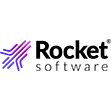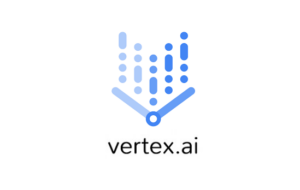

Generative AI is taking the world by storm, as organizations discover the myriad ways it can be used to serve and entice customers. With today’s enhancements to Vertex AI, Google Cloud is giving its customers more GenAI capabilities to choose from.
The pace of adoption of GenAI and large language models (LLMs) has been nothing but astonishing since OpenAI rocked the world with the launch of ChatGPT nine months ago. It also put Google in the unconventional position of playing catchup with OpenAI and its partner Microsoft–which is ironic since Google developed the core transformer model technology underpinning LLMs.
Google Cloud has narrowed the gap considerably since it started adding GenAI and LLM capabilities to Vertex AI, its flagship product for enterprise AI. According to June Yang, Google Cloud’s vice president of Cloud AI and industry solutions, the number of GenAI customer accounts in Vertex AI has grown by more than 15x in just the past quarter.
“And the GenAI products we’re seeing on Google Cloud Platform has grown by over 150 times,” Yang added during a press conference last week. “Really, just a staggering amount of growth. We’re very happy to see this type of demand.”
Newcomers to Vertex AI will have a veritable smorgasbord of LLMs and image-generating models to choose from, as the company now boasts more than 100 large foundational models in its Model Garden. PaLM is the hometown favorite, as a Google product, but you can also find Llama2, made by crosstown rival Meta, wandering the Garden. Claude 2, a foundation model developed Anthropic, is another third-party model now available to Vertex users.
An upgrade to PaLM will expand the input length by more than 4x, to 32,000 tokens. That will make it easier for customers to input longer documents and pieces of conversation into Google’s biggest foundational model, Yang says. “One of the key requests we’ve heard from customers is they want a bigger context lens windows so they can input more data,” Yang said.
PaLM also boasts full compatibility with 38 languages, including Arabic, Chinese, Japanese, German, and Spanish, among others. There are more than 100 more languages in private preview for PaLM, Yang added. Codey, a text-to-code model developed by Google, can boast up to 25% better code generation, Yang said. And Imagen, Google’s model for image generation, also boasts better quality output.
In addition to increasing the breadth and quality of foundation models, Google Cloud also announced that Vertex AI Search and Conversation is now generally available.
Vertex AI Search and Conversation utilizes vector search capabilities under the covers to provide a better search experience than keyword-search alone can provide, but without requiring advanced AI skills to integrate the search engine into customer environments. It also brings features like multi-turn search, which provides a more streamlined conversation, and conversation and search summarization.
“Think about this as Google Search for your business data,” Yang said. “You may have seen Google Search’s generative experiences from a consumer side. With Vertex AI Search, you can now offer the same generative AI experiences to your employes, partners, and customers, with built-in low code, multi-model and multi-language capabilities.”
Google Cloud also announced the general availability of Vertex AI extensions, which is set of developer tools within Vertex AI Search and Conversations that connect models to APIs to take action on real-time data.
“With extensions, a developer can now build their own extension or leverage an extension built either by Google or our partners,” Yang said. “And developers can use these extensions to build powerful GenAI application, like digital assistant, search engines, automated workflow, and more.”
The company said it’s developing pre-built extensions that connect Vertex AI to Google Cloud databases services like BigQuery and AlloyDB, the company said. It’s also committed to connecting to third-party NoSQL databases from MongoDB, Redis, and DataStax .
Google Cloud made the Vertex AI announcements at Google Cloud Next, a multi-day conference that’s expected to attract 20,000 people to San Francisco this week.
Related Items:
Duet AI Goes Everywhere in Google’s Cloud
Google Cloud Levels Up Database Services with Cloud SQL Enterprise Plus
Google Cloud Bolsters Data, Analytics, and AI Offerings
July 30, 2025
- Elastic Announces Faster Filtered Vector Search with ACORN-1 and Default Better Binary Quantization Compression
- Nutanix Named a Leader in Multicloud Container Platforms Evaluation
- RAVEL Expands Orchestrate AI With Supermicro-Based AI Workload Solution
- MLCommons Releases MLPerf Client v1.0: A New Standard for AI PC and Client LLM Benchmarking
- IBM: 13% of Organizations Reported Breaches of AI Models, 97% of Which Reported Lacking Proper AI Access Controls
- Hitachi Vantara Announces Virtual Storage Platform One for Hybrid Cloud Data Management
- Elastic Delivers New ES|QL Features for Cross-Cluster Scale, Data Enrichment, and Performance
- Cognizant Launches AI Training Data Services to Accelerate AI Model Development at Enterprise Scale
- Fractal Launches Agentic AI Platform Cogentiq to Drive Enterprise Performance
July 29, 2025
- Git-for-data Pioneer lakeFS Secures $20M in Growth Capital, Fills a Critical Gap in Enterprise AI Tech Stack
- Esri, Microsoft, and Space42 Partner to Launch ‘Map Africa Initiative’
- Teradata Expands ModelOps in ClearScape Analytics for Generative and Agentic AI
- Linux Foundation Welcomes AGNTCY to Tackle AI Agent Fragmentation
- Deloitte: Trust Emerges as Main Barrier to Agentic AI Adoption in Finance and Accounting
- Lightbits Launches NVMe over TCP Storage for Kubernetes on Supermicro Systems, Unveiling Benchmark Results
- AWS and dbt Labs Sign Strategic Collaboration Agreement
- Actian Study Finds Organizations Overestimate Data Governance Maturity, Posing Risk to AI Investments
- Privacera Named Leader in GigaOm Radar for Data Access Governance for 4th Consecutive Time
July 28, 2025
- Scaling the Knowledge Graph Behind Wikipedia
- LinkedIn Introduces Northguard, Its Replacement for Kafka
- Top 10 Big Data Technologies to Watch in the Second Half of 2025
- Iceberg Ahead! The Backbone of Modern Data Lakes
- What Are Reasoning Models and Why You Should Care
- Apache Sedona: Putting the ‘Where’ In Big Data
- Rethinking AI-Ready Data with Semantic Layers
- Top-Down or Bottom-Up Data Model Design: Which is Best?
- Rethinking Risk: The Role of Selective Retrieval in Data Lake Strategies
- LakeFS Nabs $20M to Build ‘Git for Big Data’
- More Features…
- Supabase’s $200M Raise Signals Big Ambitions
- Mathematica Helps Crack Zodiac Killer’s Code
- Solidigm Celebrates World’s Largest SSD with ‘122 Day’
- Promethium Wants to Make Self Service Data Work at AI Scale
- AI Is Making Us Dumber, MIT Researchers Find
- Toloka Expands Data Labeling Service
- The Top Five Data Labeling Firms According to Everest Group
- With $20M in Seed Funding, Datafy Advances Autonomous Cloud Storage Optimization
- Ryft Raises $8M to Help Companies Manage Their Own Data Without Relying on Vendors
- AWS Launches S3 Vectors
- More News In Brief…
- Seagate Unveils IronWolf Pro 24TB Hard Drive for SMBs and Enterprises
- Gartner Predicts 40% of Generative AI Solutions Will Be Multimodal By 2027
- OpenText Launches Cloud Editions 25.3 with AI, Cloud, and Cybersecurity Enhancements
- TigerGraph Secures Strategic Investment to Advance Enterprise AI and Graph Analytics
- Promethium Introduces 1st Agentic Platform Purpose-Built to Deliver Self-Service Data at AI Scale
- StarTree Adds Real-Time Iceberg Support for AI and Customer Apps
- Databricks Announces Data Intelligence Platform for Communications
- Gathr.ai Unveils Data Warehouse Intelligence
- Graphwise Launches GraphDB 11 to Bridge LLMs and Enterprise Knowledge Graphs
- Campfire Raises $35 Million Series A Led by Accel to Build the Next-Generation AI-Driven ERP
- More This Just In…




























